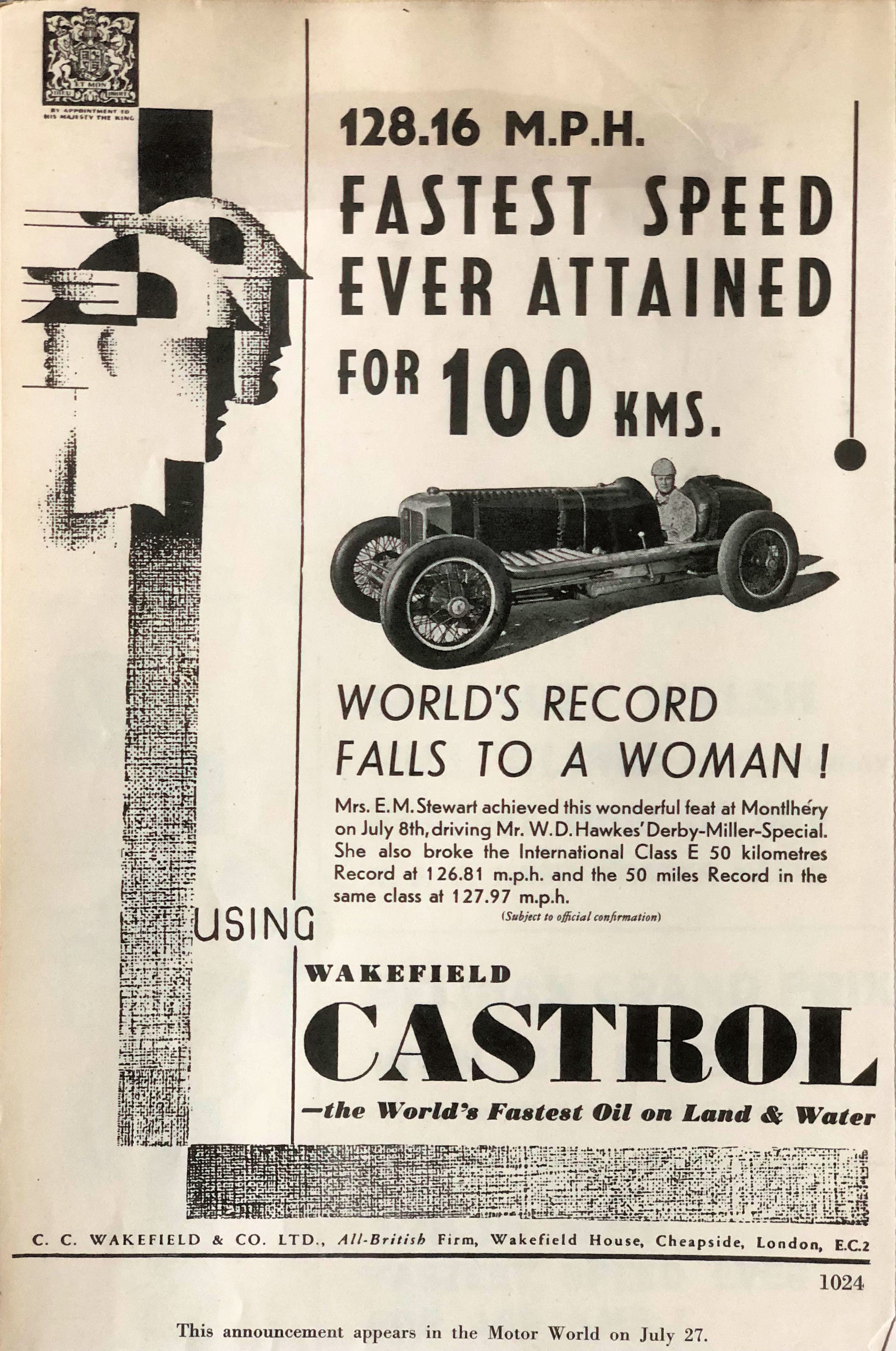Castrol and record breaking
In 1909 Charles Cheers Wakefield came up with a new and highly effective oil to which he gave the name Castrol (so-called because of the castor oil that was a key ingredient). Early Wakefield advertising in the motoring magazines such as The Autocar was worthy but rather dull, but he found a far more effective theme in motor racing and record breaking. His advertisements were not at first illustrated but, when the ‘Golden Age’ of record breaking arrived in the late 1920s,Wakefield was ready. The dramatic appearance of land speed record cars driven by heroes such as Campbell made for compelling and arresting publicity.
It is difficult to find these advertisements by trawling through each copy of the motoring and society magazines, but there is another way: the Richard Roberts Archive holds two Castrol ‘Guard Books’ – scrapbooks into which the Wakefield company pasted galley proofs of each example of its advertisements. There is one snag: the date and publication was given, but never the year. The major record breakers were so famous that it is possible to fill that gap in the available information, but the year of some lesser achievements cannot always be pinpointed.
Our earliest example dates from 1927
On 4 February, Malcolm Campbell set the land speed record at Pendine Sands, covering the Flying Kilometre (in an average of two runs) at 174.883mph and the Flying Mile at 174.224mph, in the Napier-Campbell Blue Bird. Typically for mid-1920s advertising that could be placed in magazines using cheap paper, the illustration is drawn – and it is a striking one.
Blue Bird
Another drawn illustration accompanies an advertisement from the following year, when Campbell took a much-redesigned Blue Bird to Daytona Beach in the USA and broke Segrave’s record, this time achieving 206.95mph.
George Eyston
George Eyston often appeared in Castrol advertisements. An example from 1933 announced that on 27 October he posted 104mph at Brooklands in his streamlined car, designed by E. A. Eldridge on a Chrysler chassis and powered by a diesel engine taken from an AEC bus. Castrol provided the oil, and proudly announced the achievement.
Gwenda Stewart in Derby-Miller
The challenge of identifying the year has proved too much in the case of the next advertisement, in which, sometime in the early 1930s, Gwenda Stewart broke the world 100km record at Montlhéry in her Derby-Miller. At the base of the galley proof is information on where the advertisement appeared: Motor World for 27 July.
Napier Lion-powered Bluebird IV
Our final example is dated in the text. On 2 February 1932 Malcolm Campbell attained 253mph in the Napier Lion-powered Bluebird IV. The list of publications in which Castrol placed this publicity appears at the base of the galley proof and is impressive – as befitted such an outstanding achievement.





